À l’occasion des ventes d’instruments de prestige de Vichy Enchères, le 4 décembre 2025, un violon de Dom Nicola Amati sera présenté. Réalisé à Bologne vers 1730-1740, ce nouvel instrument fait ressurgir la figure énigmatique de ce luthier, longtemps confondu avec la célèbre famille Amati de Crémone. Grâce aux recherches menées par Sandro Pasqual et Roberto Regazzi, on sait aujourd’hui que sous ce nom se cache le prêtre bolonais Nicola Marchioni. La mise en lumière de cet instrument rare offre ainsi l’occasion de redécouvrir ce luthier mystérieux.
Nous remercions Roberto Regazzi pour les divers échanges ayant contribué à cet article.

Nicola Marchioni est né en 1662, à Castelnuovo et Lizzano, sur l’Apennin bolonais. Fils de Giovanni Antonio et d’une mère prénommée Maria, il montre très jeune une vocation ecclésiastique. C’est ainsi qu’en 1687, son père lui constitue une dot – un appartement et plusieurs parcelles de terrains – lui permettant d’entrer dans les ordres, sans être à la charge de l’Eglise[1].
Désormais appelé Dom Nicola Marchioni, titre honorifique donné aux prêtres en Italie, dérivé du latin dominus – il fut ordonné prêtre à l’âge de 25 ans. Vers 1715, il s’établit définitivement à Bologne, dans la paroisse des Saints Côme-et-Damien. On ignore quand et comment il apprit la lutherie, mais Bologne était alors un centre important de luthiers et de nombreux artisans avaient reçu une formation religieuse.
Son frère Sebastiano, marié et père de famille, vivait lui aussi à Bologne. Les archives mises en lumière par Sandro Pasqual et Roberto Regazzi suggèrent que les deux frères exerçaient vraisemblablement une activité artisanale ensemble. En février 1732, un acte notarié mentionnait notamment leur deux noms, à l’occasion d’un prêt sollicité par la belle-sœur de Dom Nicola Amati, dont le montant revint au prêtre qui s’engagea à rembourser la somme et à en payer les intérêts “avec les revenus de sa vertueuse industrie”[2].
L’expression d’origine, “virtuosa sua industria”, se rencontre rarement dans les documents ecclésiastiques et doit être comprise comme la mention explicite d’une activité artisanale exercée par le prêtre. Cette archive constitue la preuve que Nicola Marchioni tirait des revenus d’un travail manuel, qu’il menait parallèlement à son ministère.
En tant que prêtre, Dom Nicola occupa plusieurs charges dans des paroisses voisines, telles que S. Andrea degli Ansaldi ou S. Maria de’ Foscherari, mais il demeura principalement domicilié dans la paroisse SS. Cosma e Damiano entre 1715 et 1730, puis de nouveau de 1744 à 1748, d’après les registres bolognais. Fait notable, ces périodes coïncident avec les dates inscrites sur les étiquettes de la plupart de ses instruments.
Notons enfin que le nom de famille Marchioni apparaît sous des formes variables dans les documents d’époque, orthographié parfois “Merchioni” ou “Melchioni”.
[1] Acte de cession de 1687 mise au jour par Sandro Pasqual. Ces informations biographiques proviennent de Pasqual S., Regazzi R., Le radici del successo della liuteria a Bologna, Firenze, Florenus Edizioni, 1998
[2] Acte notarié de 1732, archives de l’archidiocèse de Bologne, mise au jour par Sandro Pasqual

Le cas de Nicola Marchioni, ayant deux activités, n’est pas isolé. Comme nous le rappelle Jonathan Marolle :
“Beaucoup de luthiers exerçaient des métiers supplémentaires pour pouvoir vivre correctement. On sait par exemple que Pietro Guarnerius de Mantoue était violoniste à la cour du Duc de Mantoue. Il avait un traitement annuel en tant que musicien et avait reçu le droit d’exercer le métier de luthier. À Venise, Francesco Gobetti, luthier magnifique, avait commencé comme cordonnier.”
Lors de plusieurs échanges avec Roberto Regazzi, celui-ci est revenu sur la genèse de la découverte de l’identité du prêtre caché sous le nom de Dom Nicola Amati.
“Dans les années 1990, je suis tombé sur un manuscrit conservé à Mantoue : une sorte de cahier de notes de Stefano Scarampella, daté de 1863, dans lequel celui-ci dresse, à un certain moment, la liste des luthiers les plus représentatifs, classés par ville. À la rubrique “Bologne”, un nom m’a frappé : Dom Nicola Merchioni, dit Amati, avec des dates parfaitement compatibles avec la période d’activité du Dom Nicola que nous connaissions.”
Entretien avec Roberto Regazzi, octobre 2025
Cette trouvaille, dont Roberto Regazzi nous a aimablement transmis la photographie, permit, grâce aux recherches complémentaires de Sandro Pasqual, de relier définitivement le nom de Dom Nicola Amati à celui de Marchioni – le premier étant un surnom professionnel adopté par le prêtre soucieux de discrétion, qui souhaitait vraisemblablement rendre hommage au luthier crémonais déjà très connu en Italie.
“L’étape décisive est survenue lorsque j’ai rencontré Sandro Pasqual, qui lui non plus n’avait rien trouvé en cherchant le nom Amati dans les nombreuses archives qu’il avait consultées pour sa thèse consacrée à la lutherie bolonaise. En lui communiquant cette piste, il a commencé à découvrir des preuves certaines de l’existence d’un prêtre portant ce nom, dans la paroisse et à l’époque en question. Malheureusement, aucun de ces documents ne le désignait explicitement comme luthier, si ce n’est peut-être un seul qui faisait mention d’une “activité vertueuse” non précisée. Cependant, le lien établi au XIXe siècle par Scarampella nous a paru constituer une indication suffisante pour établir le lien entre les deux”
Entretien avec Roberto Regazzi, octobre 2025
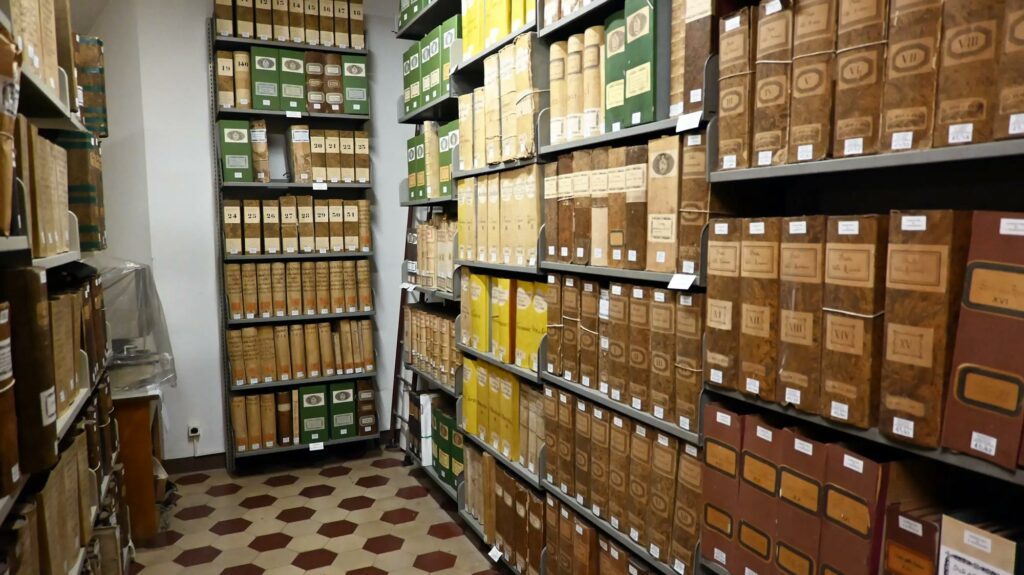
Cette découverte fut considérable, puisqu’elle mit fin à l’hypothèse selon laquelle un prêtre appartenant à la famille Amati de Crémone pouvait être à l’origine des instruments signés Dom Nicola Amati. En effet, la famille Amati comptait bien des prêtres parmi ses membres, dont un Niccolò Amati. C’est ce dont atteste notamment un acte notarié du 27 mai 1709, rédigé à Crémone par le notaire Giovanni Angelo Farina, mentionnant le “Molto reverendo padre Niccolò Amati, fratello del Molto reverendo Giovanni Battista e del signor Gerolamo Amati, figlio di Niccolò Amati”[1]. Cependant, rien ne permet de penser qu’il ait jamais exercé la lutherie et, depuis la découverte du carnet de Scarampella, le doute est désormais levé, puisque celui-ci associe clairement le nom de “Nicolo Marchioni” au nom d’usage “dit Amati”. Scarampella avait pris soin d’écrire : “Dom Nicola Merchioni, detto Amati – 1787”. La date de 1787 étant problématique – le prêtre-luthier aurait eu 125 ans – Roberto Regazzi nous explique :
“Scarampella a peut-être commis des erreurs dans son écrit, comme celle d’avoir lu un 8 au lieu d’un 3, puisqu’il rapportait très certainement les dates de documents remontant aux artisans qu’il citait, probablement à partir de leurs étiquettes ou de certaines de leurs inscriptions ; mais il rapporte une indication très importante pour notre recherche historique : il mentionne pour la première fois un inconnu absolu, Merchioni, prêtre, en précisant qu’il était mieux connu sous un surnom : Amatis [sic]. Cette piste, après plus d’un siècle, s’est révélée éclairante pour le retrouver sous ce nom dans la paroisse indiquée sur les étiquettes de Dom Nicola Amati, à l’époque de la datation de ses instruments, alors qu’aucun Amati, au sens de nom de famille ordinaire, n’était présent là-bas.”
Archivio di Stato di Cremona, Notarile, 6560, n. 27. Nous remercions Daniela Mondoni, archiviste à l’AS-CR, pour nous avoir aimablement communiqué cet acte notarié.
Cette découverte fut déterminante, elle permit de restituer à Dom Nicola Amati sa véritable identité, celle du prêtre Nicola Marchioni, actif à Bologne durant la première moitié du XVIIIe siècle.
“Ces preuves suffisent à révéler avec une certitude suffisante la véritable identité du luthier qui, étant prêtre, estimait probablement plus opportun d’être connu sous un surnom plutôt que sous son vrai nom.”
Entretien avec Roberto Regazzi, octobre 2025
[1] Entretien avec Roberto Regazzi, octobre 2025
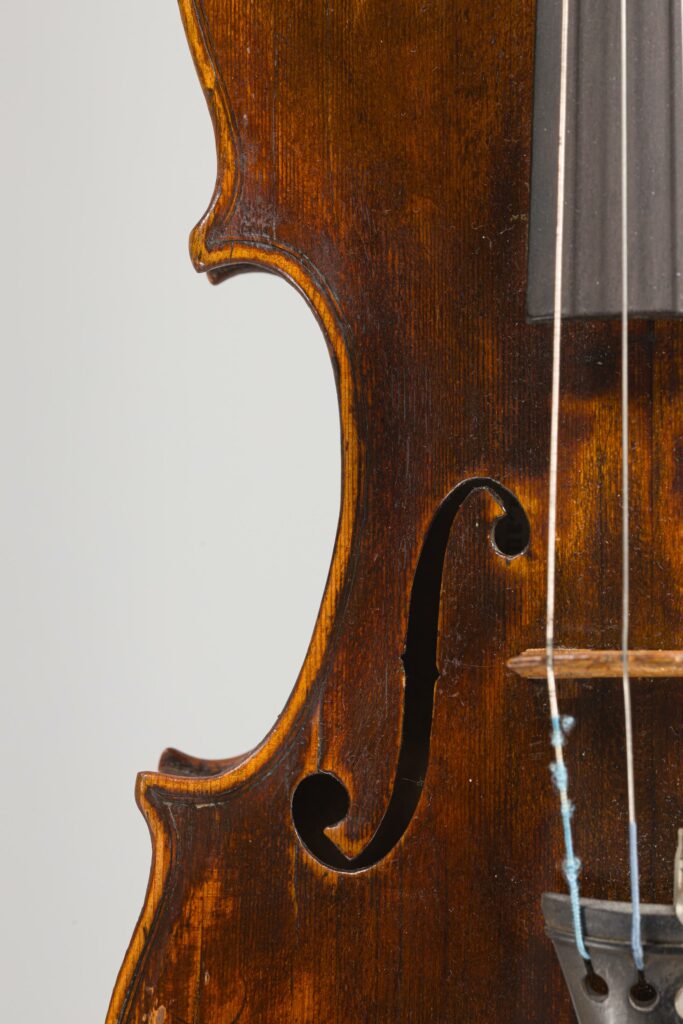
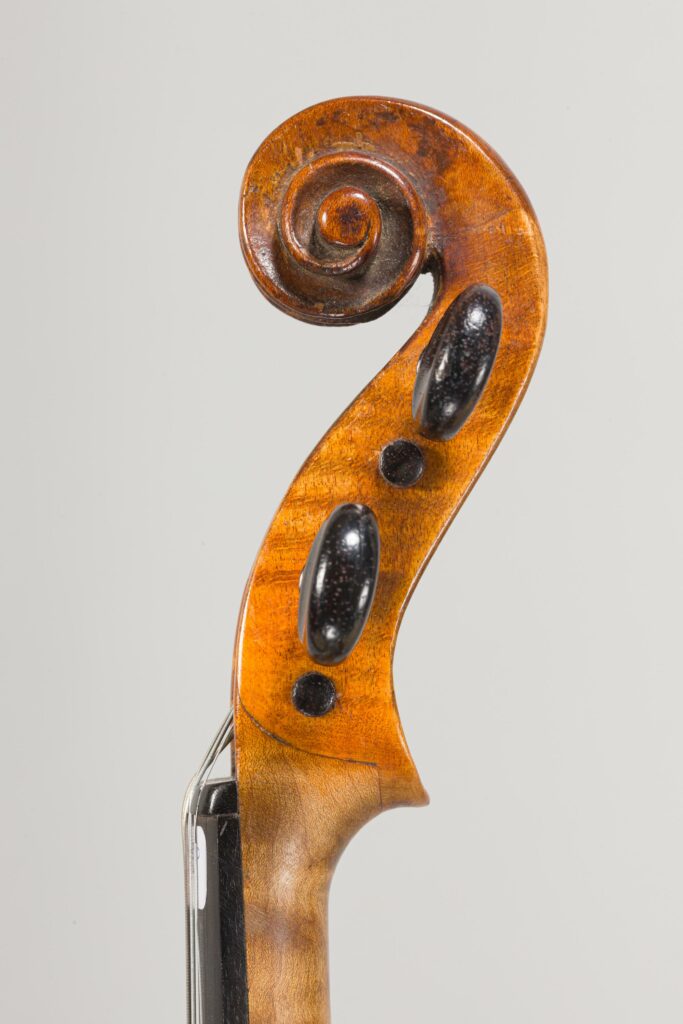
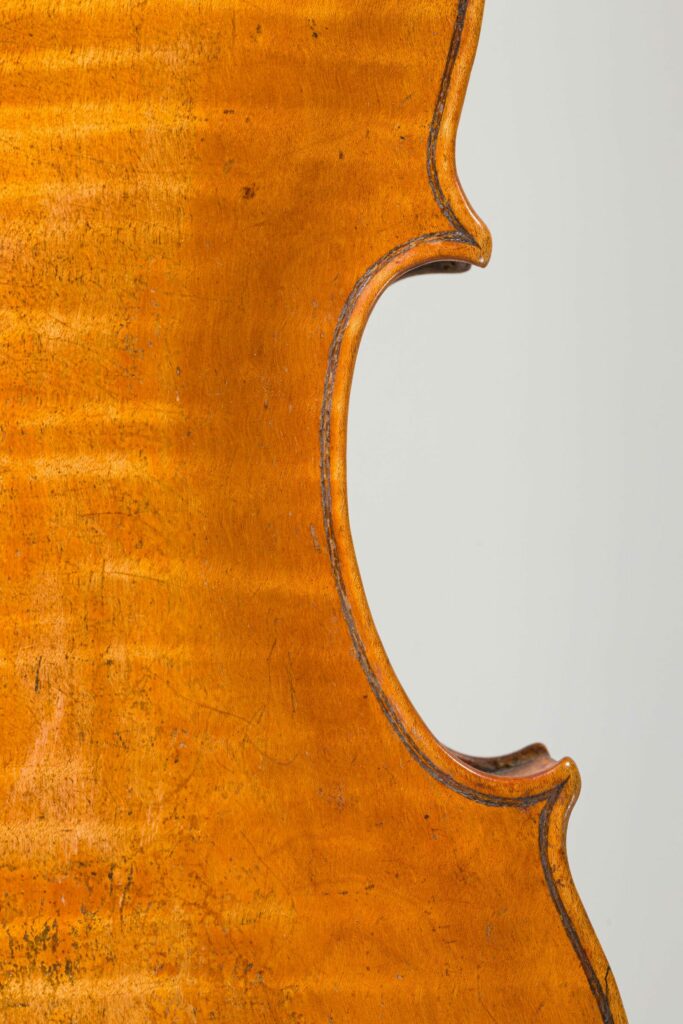
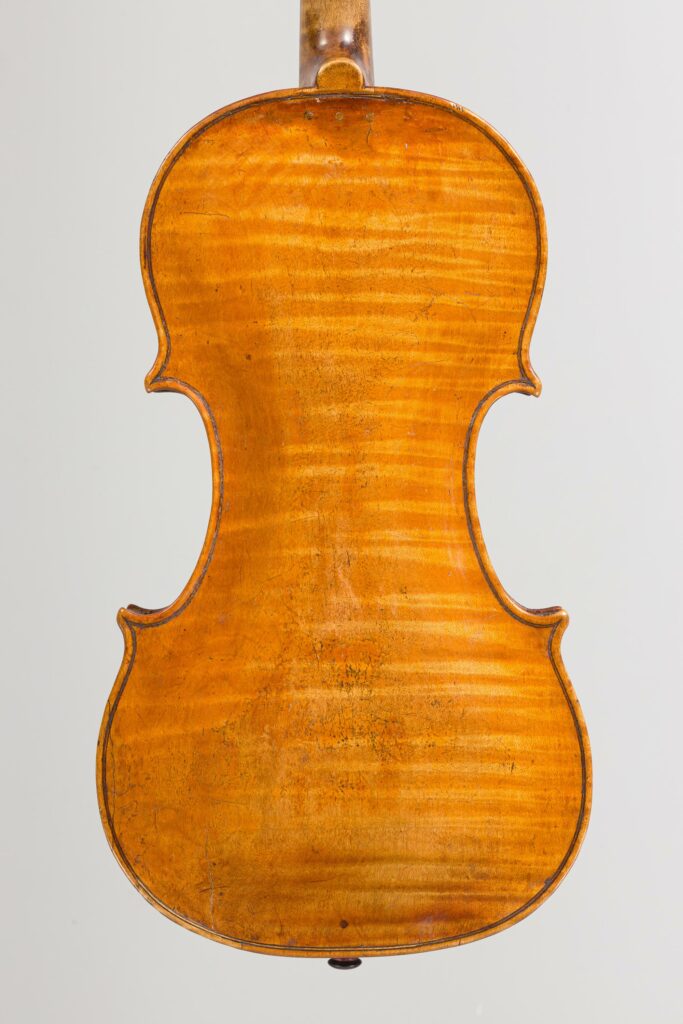
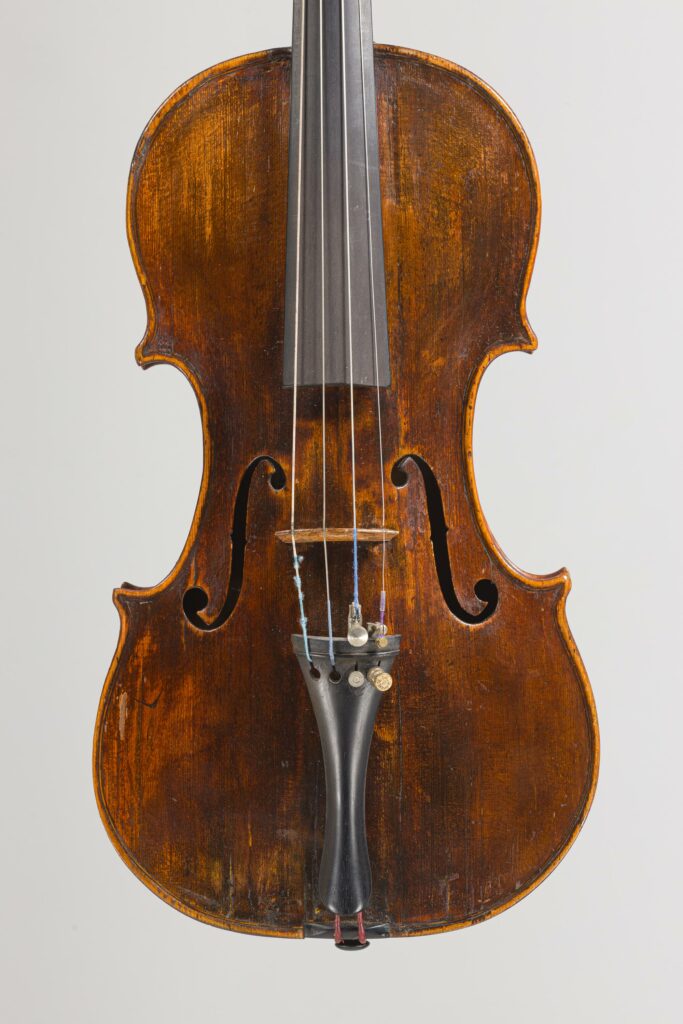
Les instruments de Dom Nicola Amati parvenus jusqu’à nous sont rares. Entre 20 et 30 modèles sont répertoriés et il s’agit essentiellement de violons. La production connue du luthier s’étend essentiellement de la fin des années 1710 au milieu des années 1740. Le plus ancien instrument daté de sa main a été réalisé en 1718, d’après les étiquettes connues, et correspond au moment où Marchioni semble commencer la lutherie, après la mort de Giovanni Tononi en 1715. Certains pensent qu’il aurait pu être formé par ce maître, ou du moins grandement influencé par la famille Tononi. Son travail s’inscrit effectivement dans la tradition bolonaise, bien que son style reste très personnel.
“On ignore auprès de qui Dom Nicola Amati s’est formé. Il est vraisemblablement autodidacte, ce qui peut expliquer des variations importantes d’un instrument à l’autre. En revanche, il y a tout de même une certaine constance dans son œuvre qui permet de reconnaître assez rapidement son travail. Il est très inscrit dans la tradition bolonaise.”
Entretien avec Jonathan Marolle, Vatelot-Rampal, Paris Luthier, spécialiste des instruments du quatuor à cordes. Expert près la Cour d’Appel de Paris, novembre 2025
Ses instruments sont conservés dans des collections privées et il est très rare de pouvoir les observer. La mise au jour de ce nouveau violon nous offre donc une chance exceptionnelle de voir et d’étudier l’un de ses instruments. Daté des années 1730-1740, il nous offre un bel exemple du savoir-faire du luthier :
“L’école de Bologne se caractérise par un modèle assez particulier, avec des détails que l’on retrouve d’un auteur à l’autre. Par exemple, le montage intérieur est très spécifique, avec de grosses contre-éclisses – un trait que l’on observe aussi chez les Tononi. Le travail des coins du filet, assez marqué, des voûtes, est caractéristique chez Dom Nicola Amati. Le fini de la tête, avec une virgule peu poussée, ainsi qu’un vernis jaune ambré – parfois brun assez foncé – sont également des éléments que l’on retrouve régulièrement chez cet auteur.”
Entretien avec Jonathan Marolle, Vatelot-Rampal, Paris Luthier, spécialiste des instruments du quatuor à cordes. Expert près la Cour d’Appel de Paris, novembre 2025
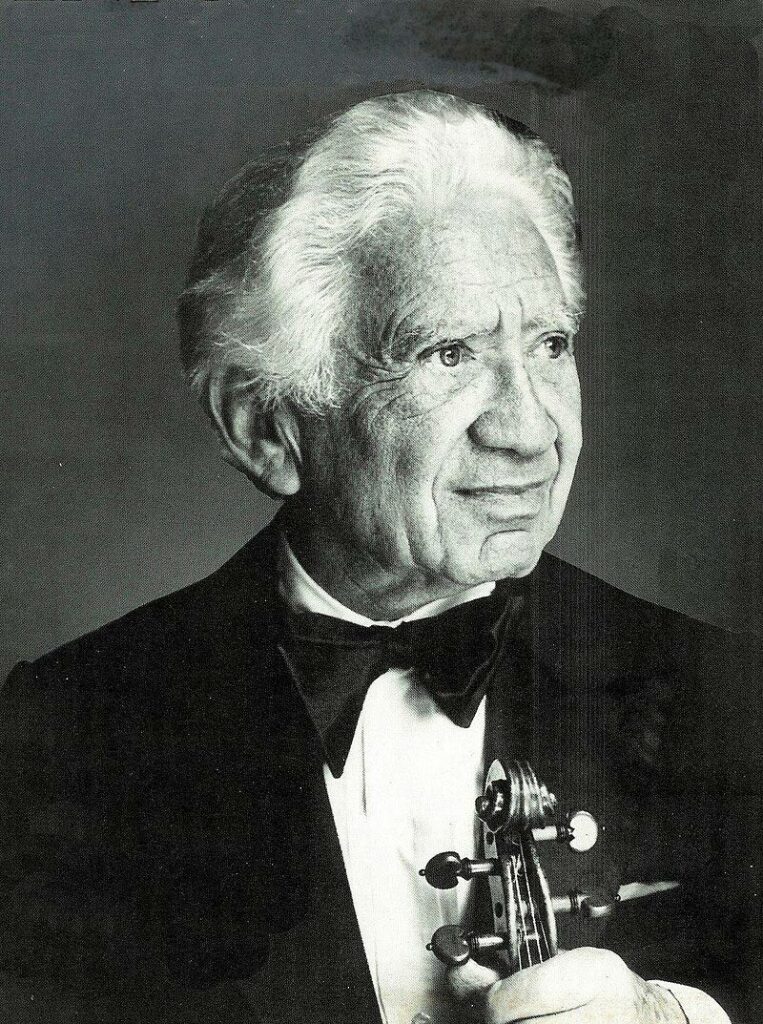
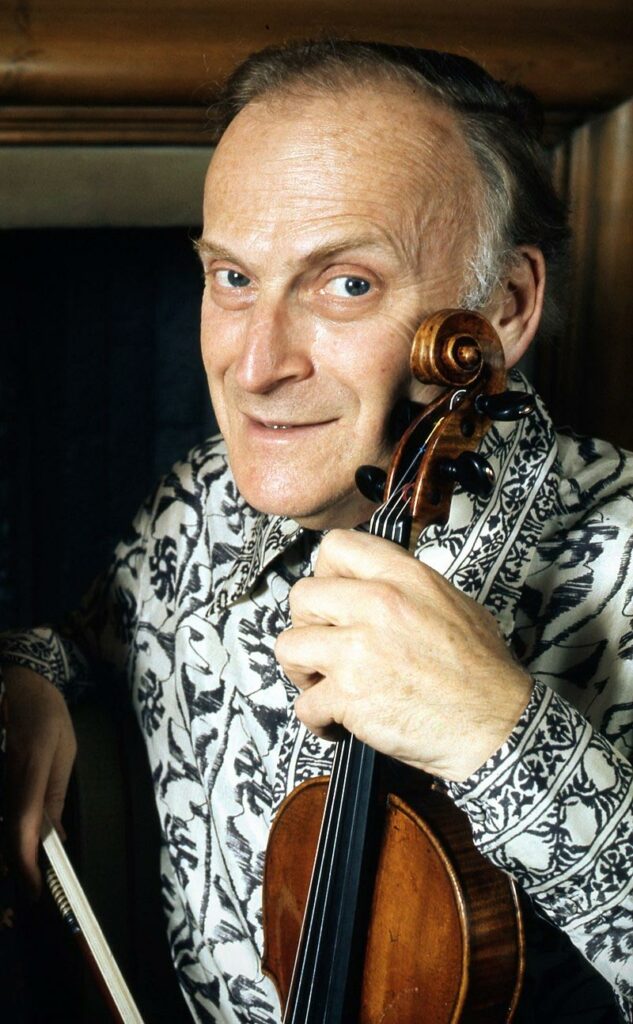
Plusieurs instruments de Dom Nicola Amati ont des provenances particulièrement prestigieuses, révélant la place singulière que ce luthier occupe dans l’histoire de la facture instrumentale. Un violon daté de 1730 appartint notamment au célèbre violoniste Yehudi Menuhin, qui l’utilisa parallèlement à ses instruments de Stradivari et de Guarneri. Ce choix, chez un musicien d’un tel rang, atteste la qualité sonore et la pérennité des instruments de Dom Nicola Amati, rivalisant ici avec ceux des plus grands maîtres crémonais.
Un autre violon, orné sur le fond des armoiries du comte palatin Esterházy – l’un des mécènes majeurs du XVIIIe siècle – passa au milieu du XXe siècle entre les mains du violoniste Henri Temianka, qui en fit usage dans sa carrière de concertiste.
Ces exemples, parmi les mieux documentés, laissent supposer que Dom Nicola Amati jouissait déjà, de son vivant, d’une certaine reconnaissance auprès des musiciens. La présence de ses instruments dans des collections et des mains aussi illustres au fil des siècles témoigne de la permanence de cette estime et de la notoriété que son œuvre a su conserver jusqu’à nos jours.
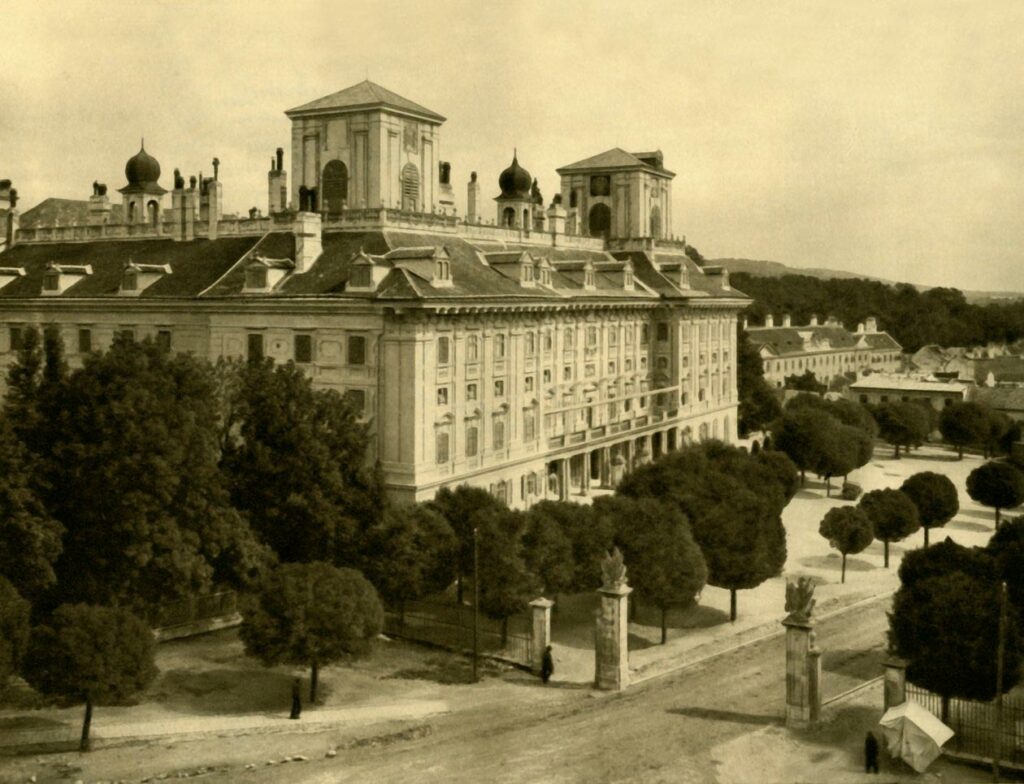
La mise en vente de ce violon de Dom Nicola Amati le 4 décembre 2025 à Vichy Enchères vient rappeler l’importance de Nicola Marchioni dans l’histoire de la lutherie bolognaise. Ce nouvel instrument enrichit le corpus restreint de ses œuvres connues et offre un témoignage précieux sur la production bolonaise au XVIIIe siècle.
A violin by Dom Nicolaus Amati will be auctioned during the Vichy Enchères sale of fine string instruments on 4 December 2025. This new instrument, made in Bologna circa 1730-1740, brings to the fore this enigmatic figure in violin making, who was mistakenly associated with the famous Amati family of Cremona for a long time. Thanks to research conducted by Sandro Pasqual and Roberto Regazzi, we now know that the person behind this name is the Bolognese priest Nicola Marchioni. The coming to light of this rare instrument provides an opportunity to rediscover this enigmatic maker.
We thank Roberto Regazzi for his contributions to this article.

Nicola Marchioni was born in 1662 in Castelnuovo di Lizzano, in the Bolognese Apennines. He was the son of Giovanni Antonio and his mother was named Maria. He showed a vocation for priesthood from a very young age. As a result, in 1687, his father provided him with a dowry – a flat and several plots of land – enabling him to enter the priesthood without having to rely financially on the Church.[1].
He was ordained a priest at the age of 25, and from that point was referred to as Dom Nicola Marchioni, a title given to priests in Italy, derived from the Latin dominus. Around 1715, he settled permanently in Bologna, in the parish of Saints Cosmas and Damian. It is not known when and how he learned violin making, but Bologna was then an important centre for violin making, and many craftsmen received religious training.
His brother Sebastiano, who was married and had children, also lived in Bologna. The historical documents brought to light by Sandro Pasqual and Roberto Regazzi suggest that the two brothers likely worked together in a handcraft. In February 1732, a legal document includes both their names in connection with a loan requested by Dom Nicolaus Amati’s sister-in-law. The priest, who was the beneficiary of this loan, repaid the capital and interest “with the income from his virtuous industry.”[2].
This expression, “virtuosa sua industria” in Italian, is rarely found in ecclesiastical documents and is most likely referencing a craft practiced by the priest. This document provides evidence that Nicola Marchioni earned an income from a handcraft, which he pursued alongside his ministry.
As a priest, Dom Nicola held several positions in neighbouring parishes, such as S. Andrea degli Ansaldi and S. Maria de’ Foscherari, but he resided primarily in the parish of SS. Cosma e Damiano from 1715 to 1730, and again from 1744 to 1748, according to the registers of Bologna. Interestingly, these periods coincide with the dates inscribed on the labels of most of his instruments.
Finally, we should mention that the surname Marchioni appears in various forms in contemporary documents, sometimes spelled “Merchioni” or “Melchioni.”
[1] Deed of transfer from 1687 discovered by Sandro Pasqual. This biographical information comes from Pasqual S., Regazzi R., Le radici del successo della liuteria a Bologna, Firenze, Florenus Edizioni, 1998
[2] Notarial deed of 1732, archives of the Archdiocese of Bologna, discovered by Sandro Pasqual

The case of Nicola Marchioni, who had two occupations, is not unique. As Jonathan Marolle indicates:
“Many violin makers held down additional jobs to make a decent living. For example, we know that Pietro Guarnerius of Mantua was a violinist at the court of the Duke of Mantua. He received an annual salary as a musician and was also granted the right to practice violin making. In Venice, Francesco Gobetti, a wonderful violin maker, began his career as a shoemaker.”
As he indicated to us in conversations, Roberto Regazzi researched what led to the discovery of the true identity of the priest hidden under the name Dom Nicolaus Amati:
“In the 1990s, I stumbled upon a manuscript preserved in Mantua: a notebook of sorts belonging to Stefano Scarampella, dated 1863, in which he listed, at one point, the most representative violin makers, classified by city. Under the heading “Bologna”, one name struck me: Dom Nicola Marchioni, known as Amati, with dates perfectly consistent with the period of activity of the Dom Nicola we knew.”
Interview with Roberto Regazzi, October 2025
This manuscript page, a photograph of which Roberto Regazzi kindly provided, allowed us, thanks to further research by Sandro Pasqual, to definitively link the name of Dom Nicolaus Amati to that of Marchioni. The priest, wanting to conceal his true identity, adopted the surname Amati as a professional name, and in doing so, likely wished to pay homage to the Cremonese maker of the same name, who was already well-known in Italy.
“The decisive moment came when I met Sandro Pasqual, who struggled to find any information under the name Amati in the various historical archives he had consulted for his thesis on the Bolognese school. After I shared this lead with him, he began to uncover evidence of the existence of a priest bearing that name, in the corresponding parish and period. Unfortunately, none of these documents made reference to his violin making activity, except perhaps the one that mentioned an unspecified “virtuous activity”. However, the connection established in the 19th century by Scarampella seemed to us to constitute sufficient evidence to link the two names.”
Interview with Roberto Regazzi, October 2025

This discovery was significant, as it put an end to the theory that a priest belonging to the Amati family of Cremona could have been the maker behind the instruments labelled Dom Nicola Amati. Indeed, the Amati family did include priests among its members, including a Niccolò Amati. This is evidenced in particular by a legal document dated 27 May 1709, drawn up in Cremona by the lawyer Giovanni Angelo Farina, which makes reference to the “Molto reverendo padre Niccolò Amati, fratello del Molto reverendo Giovanni Battista e del signor Gerolamo Amati, figlio di Niccolò Amati”[1]. However, there is no evidence to suggest that he ever practiced instrument making, and the discovery of Scarampella’s notebook ended the speculation, as it clearly links the name “Nicolo Marchioni” to the “known as Amati” name commonly used. Scarampella took care to write: “Dom Nicola Merchioni, detto Amati – 1787”. The date of 1787 is a problem though: the violin making priest would have been 125 years old. Roberto Regazzi clarifies this inconsistency:
“Scarampella may have made errors when writing in his notebook, such as reading an 8 instead of a 3, since he was most certainly copying the dates from documents written by the corresponding makers, probably their labels or some of their inscriptions. However, he provides a very important piece of information for our historical research: he mentions for the first time a complete unknown, Merchioni, a priest, specifying that he was better known by another name: Amatis [sic]. This information, more than a century later, proved invaluable in tracing the maker back to the parish indicated on Dom Nicolaus Amati’s labels, at a time consistent with the dates on these labels; meanwhile, there were no members of the Amati family ever present there.”
Archivio di Stato di Cremona, Notarile, 6560, n. 27. We would like to thank Daniela Mondoni, archivist at AS-CR, for kindly providing us with this notarised document.
This discovery was crucial as it allowed us to discover the true identity of Dom Nicolaus Amati: the priest Nicola Marchioni, active in Bologna during the first half of the 18th century.
“This evidence constitutes sufficient proof of the true identity of the maker who, being a priest, probably considered it more appropriate to be known by a professional name rather than his real name.”
Interview with Roberto Regazzi, October 2025
[1] Interview with Roberto Regazzi, October 2025





The instruments by Dom Nicolaus Amati that have survived to this day are rare. Between 20 and 30 examples are known, and they are primarily violins. The maker’s known output spans mainly from the late-1710s to the mid-1740s. The earliest known instrument by him was made in 1718, according to the dates found on his labels, and corresponds to the period when Marchioni seems to have begun making violins, after the death of Giovanni Tononi in 1715. Some believe that he may have been trained by this master, or at least greatly influenced by the Tononi family. His work is indeed part of the Bolognese tradition, although his style is very personal.
“We do not know who trained Dom Nicolaus Amati. He was likely self-taught, which may explain the significant variations from one instrument to another. However, there is a certain consistency in his output that allows his work to be easily attributed. He worked very much in the Bolognese tradition.”
Interview with Jonathan Marolle, Vatelot-Rampal, Paris Luthier, specialist in string quartet instruments. Expert at the Paris Court of Appeal, November 2025
His instruments are kept in private collections, and it is very rare that they come to light. The discovery of this new violin therefore presents an exceptional opportunity to see and study one of his instruments. It is a fine example of the maker’s craftsmanship, dating from the 1730s-1740s.
“The Bolognese school is characterized by a rather particular style, with distinctive features found across different makers of that school. For instance, the internal construction is very characteristic, with thick linings – a feature also found with the Tononi family. The purfling work at the corners, which is quite pronounced, and the arching are typical of Dom Nicolaus Amati. The shaping of the head, with a subtle comma shape, as well as the amber-yellow – sometimes dark brown – varnish are also elements typical of this maker.”
Interview with Jonathan Marolle, Vatelot-Rampal, Paris Luthier, specialist in string quartet instruments. Expert at the Paris Court of Appeal, November 2025


A number of instruments by Dom Nicolaus Amati have had particularly prestigious owners, confirming the unique position this maker occupies in the history of instrument making. In particular, a violin dated 1730 belonged to the renowned violinist Yehudi Menuhin, who used it alongside his Stradivarius and Guarnerius. This choice, by a musician of such prestige, attests to the exceptional sound and enduring qualities of Dom Nicola Amati’s instruments, which rival those of the greatest Cremonese masters.
Another violin, adorned with the coat of arms of Count Palatine Esterházy – one of the preeminent patrons of the 18th century – ended up in the possession of violinist Henri Temianka in the mid-20th century, who used it throughout his soloist career.
These well documented examples suggest that Dom Nicolaus Amati already enjoyed a certain level of success amongst musicians during his lifetime. The presence of his instruments in such illustrious collections and hands throughout the centuries attests to the renown of this maker and the enduring esteem in which his work has been held to this day.

The auction of this Dom Nicolaus Amati violin on 4 December 2025 at Vichy Enchères is a reminder of the importance of Nicola Marchioni in the history of Bolognese violin making. This new violin joins the select list of instruments known by this maker, and provides invaluable insight into Bolognese violin making in the 18th century.